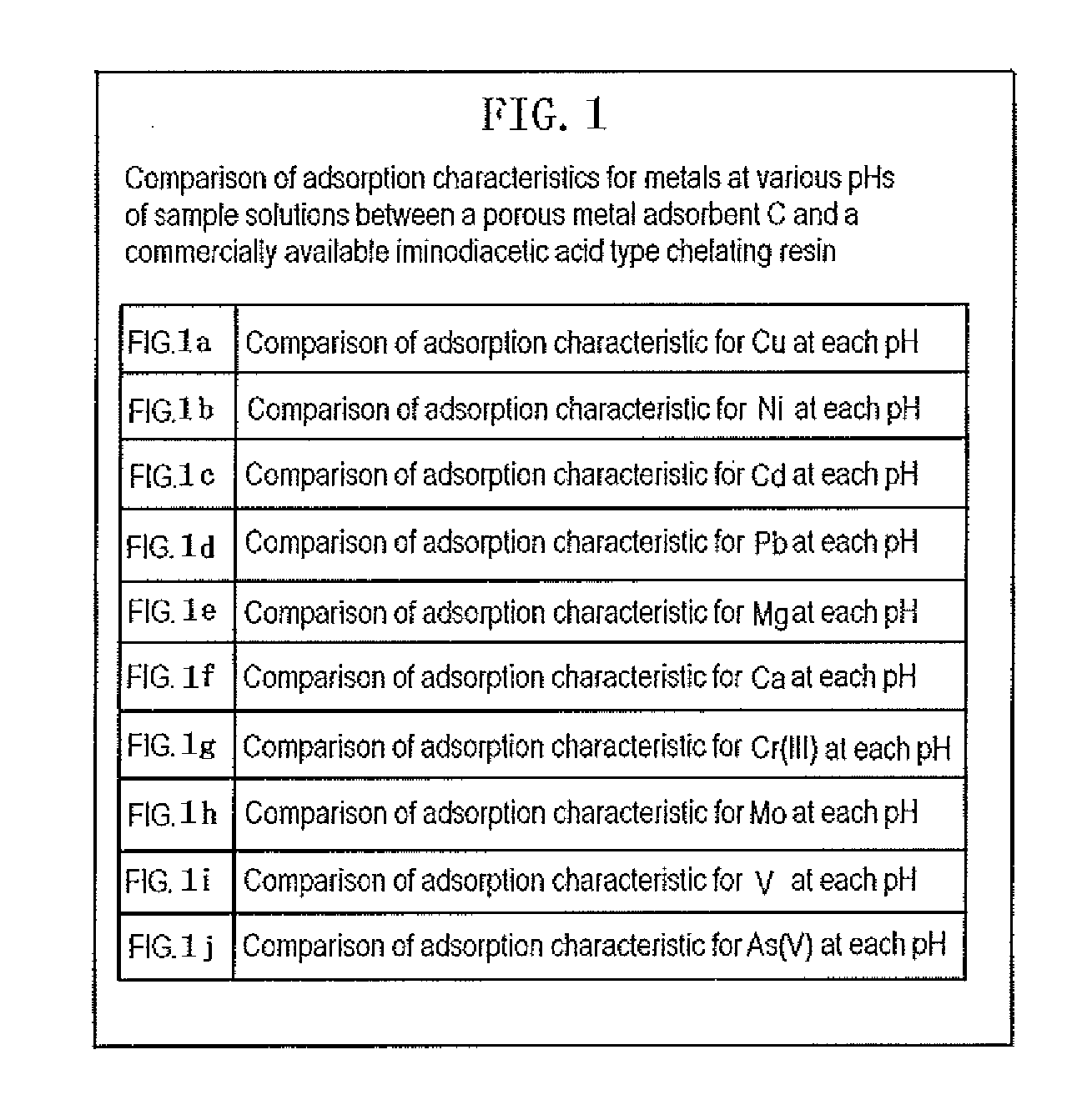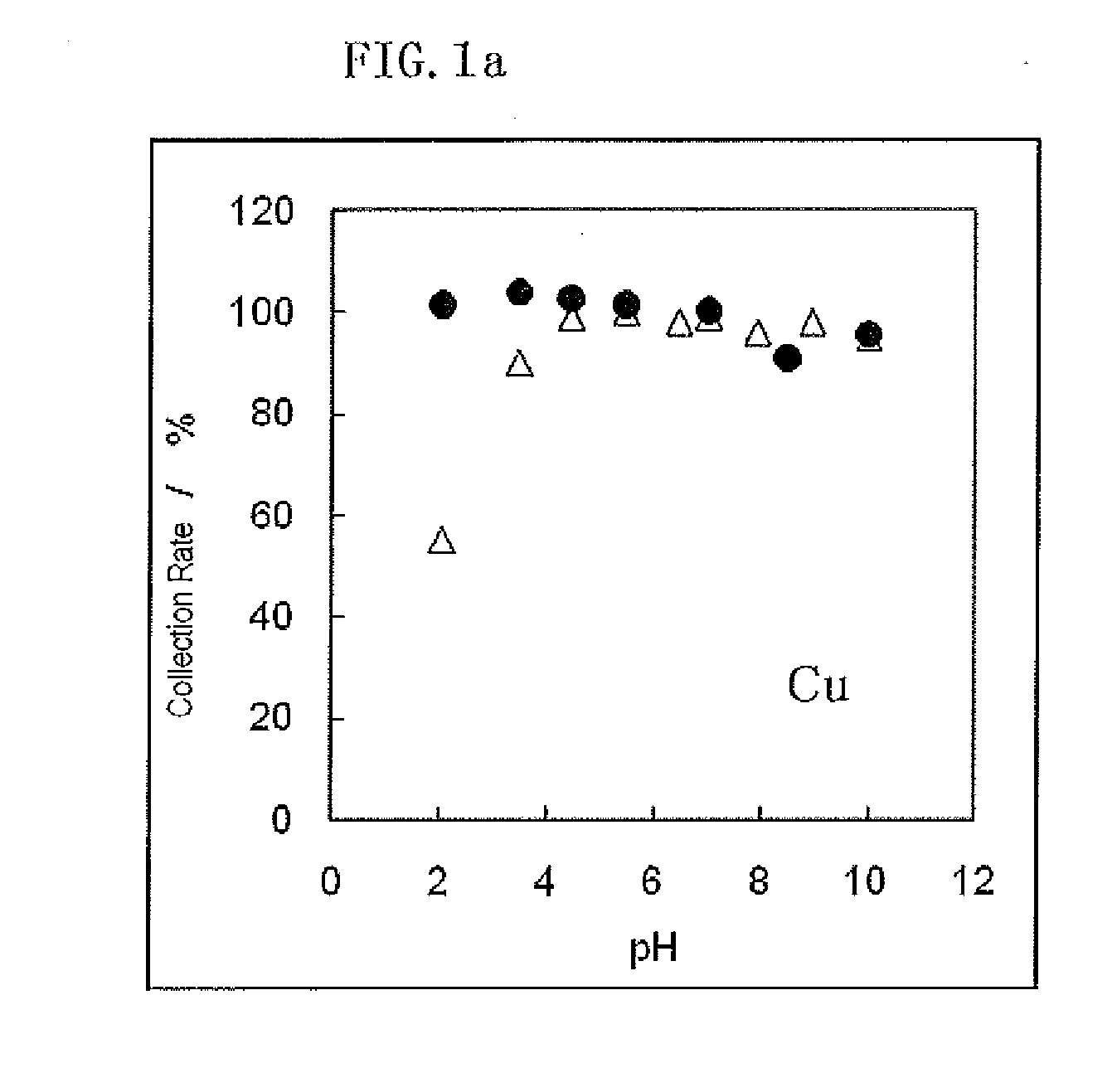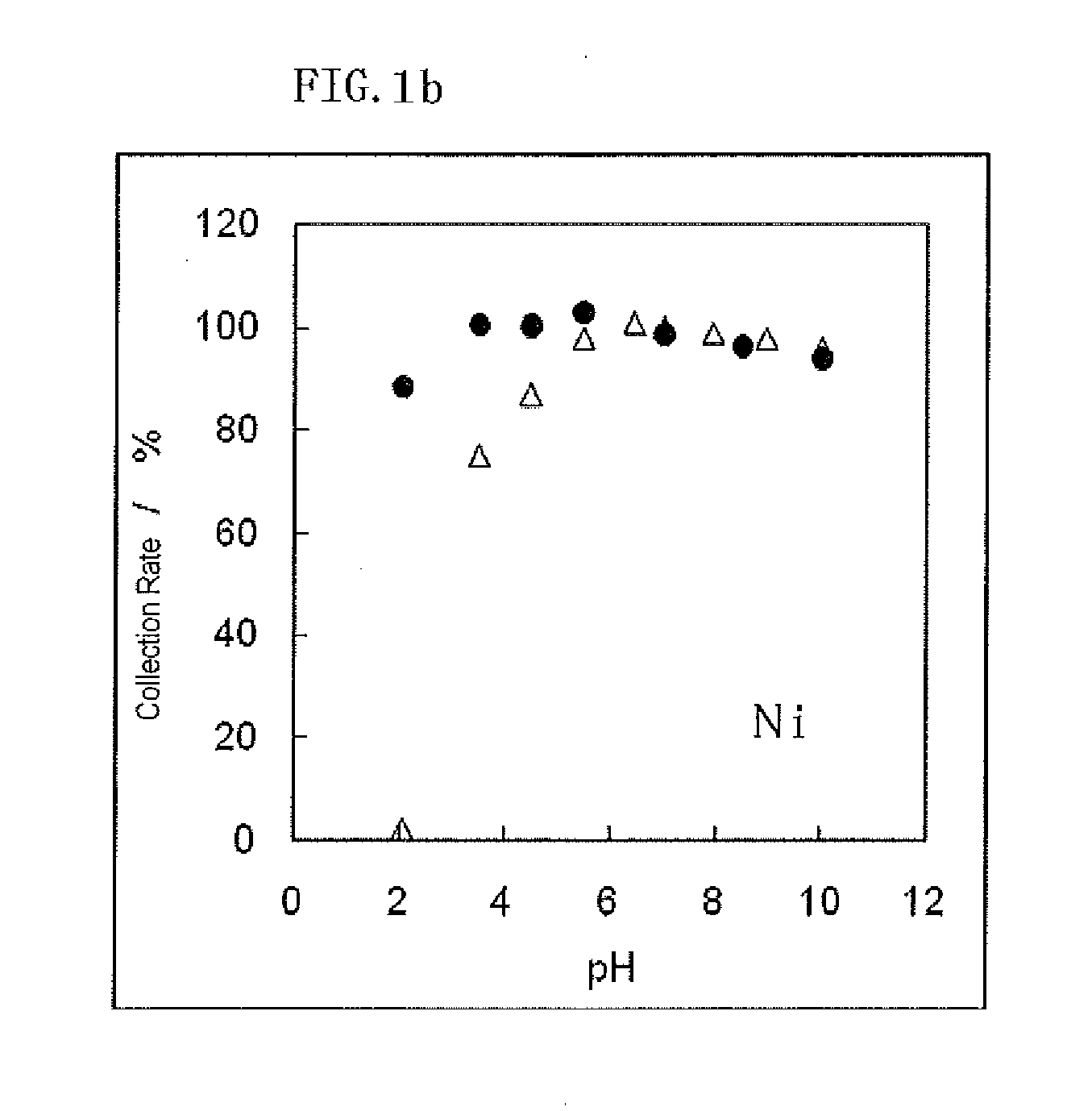Metal adsorbent containing chelating polymer
a technology of metal adsorption and chelating polymer, which is applied in the direction of fibre chemical features, textiles and paper, chemical/physical processes, etc., can solve the problems of difficult preparation of chelating resins with high metal adsorption capacity, low stability constant of complex formation, and low metal removal and collection rate, etc., to achieve high metal adsorption ability
- Summary
- Abstract
- Description
- Claims
- Application Information
AI Technical Summary
Benefits of technology
Problems solved by technology
Method used
Image
Examples
example 1
Production of Porous Metal Adsorbent A
[0074]A mixed monomer solution with 30 g of chloromethylstyrene, 170 g of divinyl benzene, 140 g of toluene and 60 g of lauryl alcohol containing 2 g of 2,2′-azobisisobutyronitrile as a catalyst was added into 2,000 mL of 0.1% aqueous polyvinyl alcohol (polymerization degree 500) solution, the mixture was stirred by a propeller blade stirrer so that the oil droplet size was 60 μm, and a polymerization reaction was carried out at 70° C. for 6 hours. After the reaction, copolymerized particles thus produced were taken by filtration, and washed with water and then methanol. Then, the particles were air-dried for a day, and then classified to obtain 75 g of polymer porous support of 45 to 90 μm. The specific surface area, pore volume and average pore size of this porous support were measured by Beckman Coulter SA3100 Surface Area Analyzer and found to be 690 m2 / g, 0.89 mL / g and 9.9 nm, respectively. Then, 40 g of polyethyleneimine (manufactured by W...
example 2
Production of Porous Metal Adsorbent B
[0075]27 g of sodium monochloroacetate was dissolved in a solution prepared by mixing 40 mL of isopropyl alcohol with 160 mL of 0.5 M sodium hydroxide, 40 g of polyethyleneimine same as that in example 1 were further dissolved, and the solution was reacted at 40° C. for 3 hours. The amount of sodium monochloroacetate was 0.25 times (as mole) based on the nitrogen content of polyethyleneimine. Thereafter, 20 g of polymer porous support same as that in example 1 was added, and the mixture was reacted at 50° C. for 6 hours to immobilize N-carboxy-methylated polyethyleneimine on the polymer porous support. After completion of the reaction, the reaction product was filtered, washed with water and then methanol and dried to produce a porous metal adsorbent B.
example 3
Production of Porous Metal Adsorbent C
[0079]A mixture of 80 g of glycidyl methacrylate, 120 g of ethylene dimethacrylate, 200 g of butyl acetate and 2 g of 2,2′-azobisisobutyronitrile was added into 2,000 mL of 0.1% aqueous polyvinyl alcohol solution, and the mixture was stirred so that the oil droplet size was 60 μm. Thereafter, a polymerization reaction was carried out at 70° C. for 6 hours. The reaction product was cooled, and copolymer particles thus produced were then taken by filtration, and washed by water and then methanol. Then, the particles were air-dried for a day, and then classified to obtain 85 g of polymer porous support of 45 to 90 μm. The specific surface area, pore volume and average pore size of this polymer porous support were 240 m2 / g, 0.62 mL / g and 11.2 nm, respectively. 40 g of polyethyleneimine same as that in example 1 was dissolved in a solution prepared by mixing 40 mL of isopropyl alcohol and 160 mL of water, 20 g of obtained polymer porous support was a...
PUM
| Property | Measurement | Unit |
|---|---|---|
| adsorption capacity | aaaaa | aaaaa |
| pressure | aaaaa | aaaaa |
| pressure | aaaaa | aaaaa |
Abstract
Description
Claims
Application Information
 Login to View More
Login to View More - R&D
- Intellectual Property
- Life Sciences
- Materials
- Tech Scout
- Unparalleled Data Quality
- Higher Quality Content
- 60% Fewer Hallucinations
Browse by: Latest US Patents, China's latest patents, Technical Efficacy Thesaurus, Application Domain, Technology Topic, Popular Technical Reports.
© 2025 PatSnap. All rights reserved.Legal|Privacy policy|Modern Slavery Act Transparency Statement|Sitemap|About US| Contact US: help@patsnap.com



